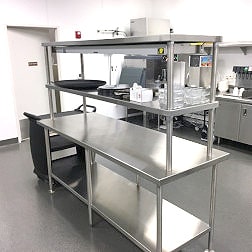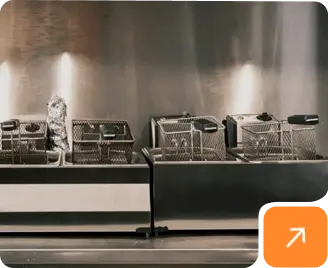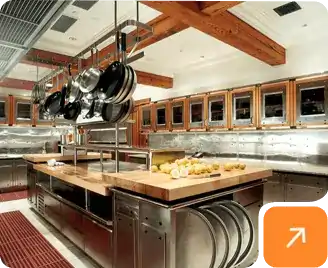
HoodMart is Here to Help You Find the Perfect Fit for Your Kitchen
Selecting the right restaurant hood is one of the most critical decisions for your commercial kitchen. It’s not just about meeting code requirements—choosing the right hood directly impacts your kitchen’s efficiency, safety, and air quality. With numerous options available, from different sizes and styles to various features, knowing which hood suits your needs can be overwhelming. In this guide, the experts at HoodMart will break down what you need to consider, so you can make an informed choice that will keep your kitchen running smoothly.
Assess Your Kitchen Layout and Cooking Needs
Every commercial kitchen is unique, and the first step in selecting a hood is to understand your kitchen’s layout and cooking volume. Are you managing a high-heat environment with multiple fryers and grills, or does your operation focus on lighter cooking with griddles and ovens? The type and amount of cooking equipment you have directly influence the hood you need. For instance, high-volume kitchens require a Type 1 hood, designed to handle grease-laden vapors and smoke, while a Type 2 hood is ideal for non-grease-producing appliances like steamers and dishwashers.
Types of Hoods: Know the Difference
Commercial kitchen hoods come in several types, each suited to different applications:
- Type 1 Hoods: These are designed to capture grease, smoke, and heat generated by appliances like fryers, grills, and ranges. They’re equipped with filters to trap grease and often include fire suppression systems, making them essential for most commercial kitchens.
- Type 2 Hoods: Used for appliances that do not produce greases, such as steamers, dishwashers, and pasta cookers; type 2 hoods help control heat and moisture without needing grease filtration.
- Ventless Hoods: Ventless hoods are a great alternative if your kitchen setup doesn’t allow for traditional venting due to building constraints or cost considerations. These systems use advanced filtration technology to filter the air without needing ductwork.
Evaluate Hood Size and Mounting Options
The size of your kitchen hood should match the size and configuration of your cooking equipment. A hood that is too small won’t effectively capture smoke and grease, while an oversized hood can waste energy and take up unnecessary space. Measure your appliances and ensure that the hood provides adequate coverage—typically extending 6-12 inches beyond the edges of your cooking surface.
Mounting options also vary based on your kitchen’s design:
- Wall-Mounted Hoods: Best for equipment positioned against a wall, these are the most common type in commercial kitchens.
- Island Hoods: For cooking equipment placed in the center of your kitchen, island hoods offer 360-degree coverage.
- Proximity Hoods: These low-profile hoods are positioned closer to the cooking surface, efficiently capturing smoke and steam in compact spaces.
Consider Ventilation and Exhaust Requirements
Proper ventilation is key to maintaining a healthy kitchen environment. The hood system should have an efficient exhaust fan that removes contaminants and circulates clean air back into the kitchen. Choosing a fan that matches the hood’s capacity is important; a mismatched fan can lead to poor air quality and increased energy costs.
Also, consult with local building codes and health regulations to ensure your exhaust system complies with all requirements. HoodMart offers expert consultation to help you navigate these complexities, ensuring your kitchen stays compliant and safe.
Energy Efficiency and Maintenance
Energy-efficient hoods can significantly reduce operational costs. Look for hoods equipped with variable speed controls and energy-saving features that allow you to adjust airflow based on cooking demand. Not only does this help reduce energy usage, but it also prolongs the life of the hood and its components.
Maintenance is another crucial factor—choose a hood with easy-to-clean filters and accessible components. Regular cleaning and maintenance will keep your hood operating at peak performance, prevent grease build-up, and reduce fire risk.
Why Choose HoodMart?
HoodMart’s restaurant hoods are designed to meet the highest standards of performance, safety, and efficiency. Made in the USA, our hoods are built from heavy-gauge steel and comply with NSF, NFPA 96, and UL710 standards. With factory-direct pricing, expert customer support, and a wide range of customizable options, HoodMart is your one-stop solution for all your kitchen ventilation needs - contact us today!








 CUSTOM FABRICATOR
CUSTOM FABRICATOR














































